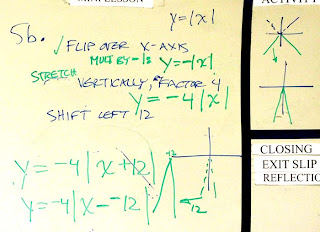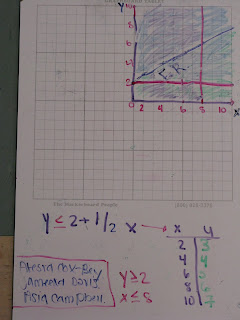9-30 Function composition
To compose functions is to put one function inside another function.
In our class example the shoe decision function was inside the legwear decision function.
Event was the first domain of inputs, and Legwear was the last range of outputs.
Function notation allows us to use substitution and the order of operations to evaluate composed functions.
f(g(x)) is read "f of g of x." It does not mean f times g of x.
The variable x is inside g(x), and g(x) is inside f(x).
The order of operations tells us to begin with the inner most grouping symbol and to work outward.
Given g(x) = 2x - 1 and f(x) = x^2, f(g(x)) means substitute 2x -1 for the g(x) that is contained in f:
f(g(x)) = f(2x - 1) = (2x - 1)^2
f(g(x)) means get the result of g then square it
f(x) composed with g(x) is written (f small circle g)(x) which means f(g(x)). g is inside f.
g(x) composed with f(x) is written (g small circle f)(x) which means g(f(x)). f is inside g.
f(x) times g(x) is written (f(x))(g(x))
f(x) divided by g(x) is written f(x)
g(x)
f(x) added to g(x) is written f(x) + g(x)

























